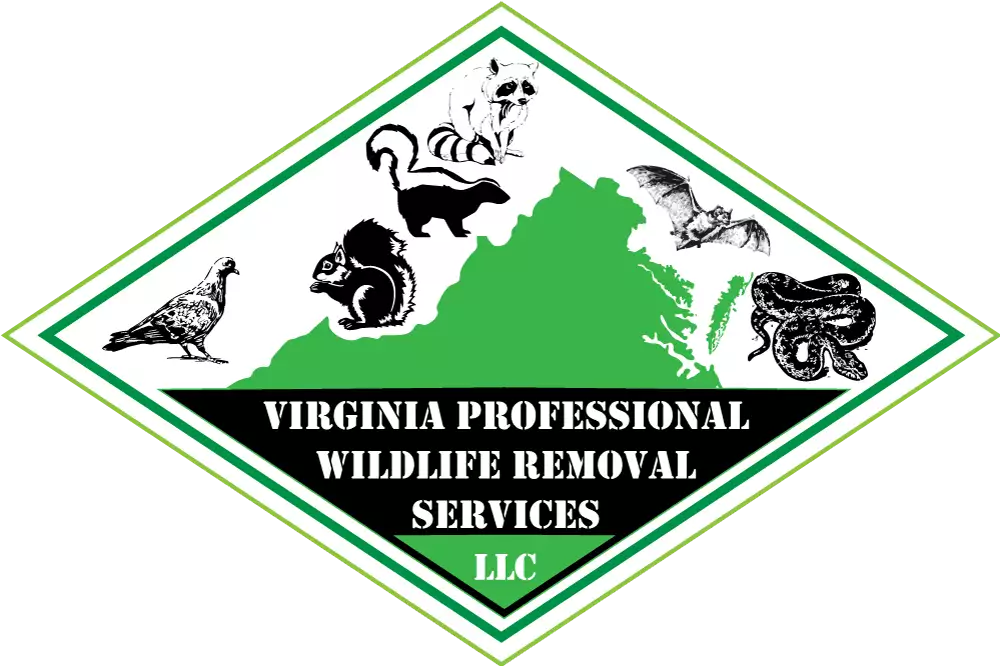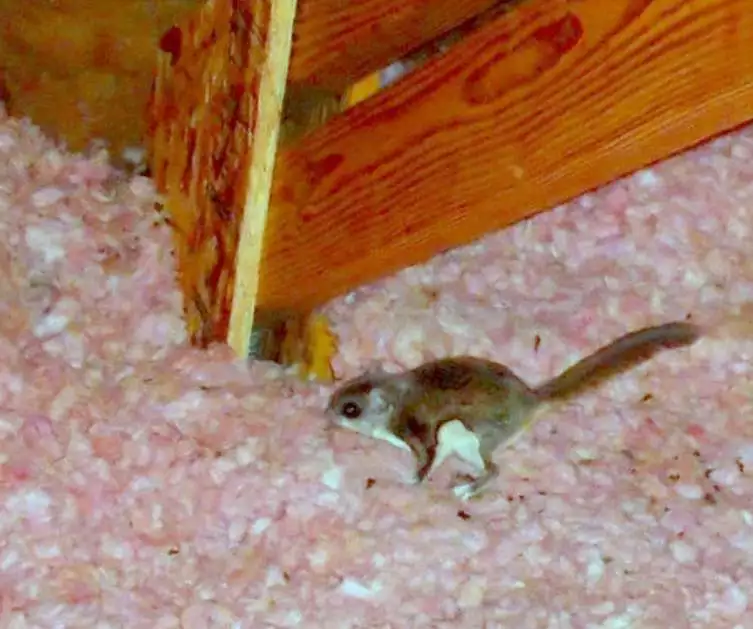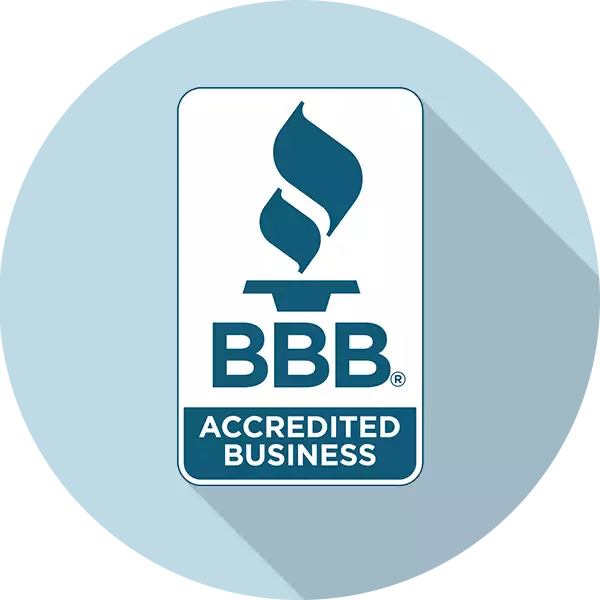Flying Squirrel Removal & Control
Virginia Professional Wildlife Removal Services, LLC.
A full-service animal wildlife trapping, removal and pest control company – Licensed and Insured!

Flying Squirrel Removal & Control
Virginia Professional Wildlife Removal Services, LLC.
A full-service animal wildlife trapping, removal and pest control company – Licensed and Insured!

Getting Rid of Flying Squirrels: Your Complete Guide
At Virginia Pro Wildlife Removal, we’re your go-to for humane, quick removal of flying squirrels from homes and businesses. Got a squirrel issue? We’re here to help you make your space cozy and safe again. Keep reading to answer common questions like, “How do I get flying squirrels out?” and “What do I do if they’re in the attic?”
Flying squirrels are cute but can be a real problem when they settle into your Virginia home, yard, or attic. These tiny night-loving critters can damage your home, munch on wires, and even make your insulation dirty. Whether you’re dealing with southern or northern flying squirrels, this guide helps you get to know and remove them.
How to Spot Flying Squirrels in Virginia
Flying squirrels in Virginia may look cute but can turn into a big problem. Heard weird noises in your attic? Seen signs of these quirky animals? Our pros are ready to help with flying squirrel removal in Virginia.
Know Your Flying Squirrels
Flying squirrels in Virginia aren’t easy to see because they’re night owls. Most people find out they have them by hearing their unique night sounds. Wondering, “What do flying squirrels sound like?” You’re not alone. Their calls sound like quick, high chirps. So, if you hear odd sounds at night, you might have flying squirrels.
How We Remove Flying Squirrels
Flying squirrels can make life hard by chewing wires and harming insulation. They can also bring in ticks and fleas. That’s why it’s key to deal with them fast.
Our team is trained in kind and effective squirrel removal. First, we check your home to find how they’re getting in. Next, we make a special plan to get them out without hurting them.
After we make sure all the squirrels are gone, we stop them from coming back. We close any holes they used to get in and share tips to make your property less appealing to them.
Think you’ve got flying squirrels in your Virginia home? Don’t wait for it to get worse. Reach out to us now for quick and trusted flying squirrel removal. We’re committed to giving you a safe, squirrel-free home.
Getting Flying Squirrels Out: A Step-By-Step Guide
Getting flying squirrels out isn’t easy, but it’s key to keep your home safe and healthy. Here’s how we tackle it:
- Check the Area: First, we find out if you have flying squirrels. We look for where they get in and out and how many there might be.
- Say Goodbye: Next, we use things like one-way doors to safely get them out of your home.
- Close the Door: Once they’re gone, we close up any holes to keep them from coming back.
- Clean Up: Last, we clean and make the area germ-free to get rid of any last signs of the squirrels.
Know Your Flying Squirrels
Before you act, it’s good to understand flying squirrels. Knowing their habits helps you spot them and find the best ways to deal with them.
- They love the night and often live together in groups.
- They usually live in trees but might choose your attic.
- They eat things like nuts, seeds, and fruit.
- They’re great gliders and can cover long distances.
- They talk to each other with noises and smells.
Are Flying Squirrels Risky?
Flying squirrels are tiny animals that can glide. Most of the time, they’re not a risk to people. But there are some things to think about:
- Bites: They can bite if scared or touched the wrong way.
- Germs: They can carry diseases, though it’s rare.
- Pets: Your pets might not like them and could get hurt.
- Home Damage: They can chew on stuff in your home, like wires.
- Protecting Kids: Like most animals, they can get mean if they think their little ones are in danger.
If you think you have flying squirrels, it’s best to call us, the pros in wildlife removal.
Signs You Have Attic Flying Squirrels
Think flying squirrels are in your attic? Here are clues:
- Night Noises: If you hear scurrying at night, it might be them.
- Tiny Holes: Check for small holes in your roof or walls.
- Leftovers: Look for tiny droppings that look like big grains of rice.
- Nests: If you find nests made from leaves and bark, it’s a clue.
- Teeth Marks: They might chew on wood or wires.
- Hidden Food: Finding stashes of food like seeds could mean squirrels.
- Tiny Tracks: Small footprints could be a hint.
- Seeing One: If you see one, you know for sure.
- Grease Marks: Look for oily marks near holes they use.
- Stains: Large or long-term groups might leave urine stains.
If any of these signs match, call our experts for safe and kind removal of flying squirrels from your attic.
Check for Signs of Flying Squirrels
First, figure out how bad the squirrel issue is. Look for these clues:
- Tiny Poop: Squirrel droppings are small and dark.
- Chew Marks: See if they’ve chewed on wires or wood.
- Nests: Search for nests made of paper, leaves, or twigs.
- Noises: Listen for scurrying sounds at night.
Keep Them Out and Take Away Food
Next, make sure they can’t get in and take away what they eat.
- Close Holes: Check outside for holes they could use and block them.
- Cut Branches: Trim any tree branches near your house.
- No Bird Food: Take down bird feeders or use ones squirrels can’t use.
- Lock Trash: Keep trash cans closed tight.
Use Kind Traps
Using live traps can work well for catching and taking flying squirrels away.
- Set Traps: Put traps where you see signs of them.
- Use Bait: Fill traps with things like peanut butter or fruit.
- Check Often: Don’t leave squirrels in traps too long.
- Take Far Away: Let them go at least 5 miles from your home.
Types of Traps
You can use live traps, quick-kill traps, and snap traps. They all work well.
Catch a Squirrel Inside
Catching one in your home can be tough but it’s key for your safety and the squirrel’s.
- Close Doors: Shut all doors and windows first.
- Use Bait: Put some nuts or fruit in the room.
- Catch Carefully: Use a light net to catch the squirrel softly.
How to Trap a Flying Squirrel
Catching a flying squirrel takes time, quietness, and the right trap.
- Look at Night: They’re mostly out in the late evening.
- Find Them: Listen for their sounds or watch for them gliding.
- Set a Trap: Place a humane trap near where you see them.
- Be Careful: Move slowly so you don’t scare them.
- Handle with Care: Follow the law when you take them away.
Flying Squirrel Traps
Traps for flying squirrels are built to safely catch these gliding rodents. They’re made of strong stuff like metal or tough plastic and have a secure door. You can lure squirrels in with food, and the door will close fast but safely behind them.
Flying Squirrel Sounds
Flying squirrels make a range of cool sounds. They chirp, whistle, and even purr to talk to each other. These sounds can mean many things like warnings or mating calls.
How They Act
These night-loving critters can glide from tree to tree thanks to a skin flap called patagium. They’re also social, live in groups, and use sounds and smells to chat with each other.
What They Like to Eat
Flying squirrels love things like peanut butter, seeds, and nuts. Use these as bait that’s both tempting and healthy for them.
Are They Omnivores?
Yes, flying squirrels eat both plants and animals. Their menu ranges from seeds to insects.
Need Help?
If you can’t handle the issue yourself, think about calling our expert animal removers.
Clear Your Attic of Flying Squirrels
Flying squirrels like attics, especially when it’s cold. To clear them out:
- Find the Gaps: Look for places they’re getting in like roof vents or cracks.
- Use One-Way Doors: These let them leave but not come back.
- Close the Gaps: Once they’re out, seal any holes.
- Fix and Clean: See what damage they did and clean up.
How to Do It
To get them out of your attic, first find where they’re coming in. Use live traps to catch them and then seal up their entry points. Since they’re night critters, do this work after dark. And remember, in many places, you need a permit to catch wild animals.
In Closing
Flying squirrels are cute but can be a problem. Know their habits, check for signs they’re around, and use safe traps to catch them. If you can’t handle it, call us for professional help.
Service Area For Flying Squirrel Removal
We provide nuisance flying squirrel removal, flying squirrel trapping, flying squirrel control, flying squirrel exclusion and flying squirrel damage repairs to individuals, businesses, and municipalities throughout Virginia. For additional information on flying squirrel removal visit the following local pages: Richmond Flying Squirrel Removal, Charlottesville Flying Squirrel Removal.
Our other service areas in Virginia include: Afton, Albemarle, Alexandria, Amelia, Annandale, Arlington, Ashburn, Ashland, Barboursville, Bon Air, Boyd Tavern, Brandermill, Burke, Central VA, Centreville, Charlottesville, Chesapeake, Chester, Chesterfield, Colonial Heights, Crozet, Dale City, Earlysville, Fairfax, Ferncliff, Fluvanna, Fredericksburg, Glen Allen, Goochland, Gordonsville, Gum Spring, Hadensville, Hampton, Hanover, Harrisonburg, Henrico, Hopewell, Innsbrook, Kents Store, Keswick, Lake Anna, Lake Monticello, Lake Ridge, Lakeside, Leesburg, Lignum, Locust Grove, Louisa, Maidens, Manakin, Manassas, McLean, Mechanicsville, Midlothian, Mineral, Newport News, Norfolk, Northern Virginia, North Garden, NoVA, Oilville, Orange, Palmyra, Pantops, Petersburg, Portsmouth, Powhatan, Reston, Richmond, Rockville, RVA, Scottsville, Shannon Hill, Short Pump, Sandy Hook, Staunton, Stoney Point, Suffolk, Tidewater, Tuckahoe, Troy, Waynesboro, Williamsburg, Winchester, Woodlake, Wyndham, VA, Virginia, Virginia Beach.
Please Complete Our Simple Contact Form Below:
At Virginia Professional Wildlife Removal Services We Are Constantly Striving To Advance Our Education So That We May Serve You Better.
Virginia Professional Wildlife Removal Services has the knowledge and experience to resolve your nuisance flying squirrel problem quickly and humanely. Contact us today.
Signs Flying Squirrels are in Your Attic
If you hear sounds like rolling marbles in your attic, you might have flying squirrels. People also say they hear noises in the walls. These are usually flying squirrels storing nuts.
What Damage Can Flying Squirrels Do?
While cute, flying squirrels can hurt your home just like rats and mice. Here’s how:
In the Garden
They will eat plants and seeds from your garden and birdfeeder. They also dig holes.
On the House
They chew on wood and can make holes in your walls. This can let other animals in.
Wires
They like to chew on wires, too. This can break your gadgets and risk fires.
Pipes
They may chew on pipes, causing leaks or breaks.
Wood
They can also damage wooden furniture and parts of your home.
Where They Live
Flying squirrels are mostly found in southeastern Canada, the eastern U.S., Mexico, and Honduras. They like woodlands with seed-producing trees like maple and oak.
What They Look Like
They have a loose skin flap that lets them glide. They’re gray on top and white below, with big eyes for seeing at night.
Reproduction
They usually have two sets of babies each year. Young ones are born helpless but grow fast.
Lifespan
They live about 5-6 years in the wild but can reach 10 years in captivity.
Behavior
They’re most active at night and can glide up to 80 meters. They live in groups, especially in winter.
Communication
They have good senses and may make sounds to talk to each other.
What They Eat
They eat a wide range of food, including nuts, seeds, fruit, and even young birds.
Predators
They watch out for hawks, owls, and climbing animals like cats, snakes and raccoons.
Their Role in Nature
They help trees by spreading seeds and fungi spores.
Impact on People
They can be pests in homes but also play a useful role in forests. Some people even keep them as pets.
Health Risks
They can sometimes carry a type of typhus that can infect humans.
What to Do If You Think You Have Them
Check your attic for signs like droppings or damage. Look for small holes where they might get in.
How to Remove Them
You can either trap and move them or block all entry points except one and use a one-way door.
Schedule Our Services
We understand that flying squirrel infestations can be frustrating and damaging to your property. At Virginia Professional Wildlife Removal Services, we have the experience and expertise to handle these situations professionally and effectively. Our team is committed to providing you with the best flying squirrel removal services while prioritizing the safety and well-being of the animals. Contact us today for more information or to schedule an inspection.
Call us today at (804) 457-2883 if flying squirrels are causing you trouble, and you want them gone! Virginia Professional Wildlife Removal Services is here for you, and we’ll guarantee that your squirrel problem will be solved in no time. We service the state of Virginia, so make sure to contact us if you live in this area. Contact us today to learn more about our incredible services, and to see how we can help you!
Flying Squirrel Quicklinks
| Flying Squirrels in the Attic | Flying Squirrels in the Walls | Flying Squirrels in the House | Flying Squirrel Sounds | Flying Squirrel Droppings |
| Flying Squirrel Traps & Deterrents | Flying Squirrel Nests | What Does a Flying Squirrel Look Like? | Do Flying Squirrels Carry Diseases? | Do Flying Squirrels Fly? |
| Do Flying Squirrels Hibernate? | Flying Squirrels on the Roof | Where Do Flying Squirrels Nest? | Flying Squirrels in Crawl Spaces | Flying Squirrel Trapping |
| Flying Squirrel Droppings | Flying Squirrel Tracks | Flying Squirrel Life Cycle |

VPWRS Can Solve Your Problems!
- Scratching Noises In Your Attic, Walls, Or Crawlspace?
- Flying Squirrels In Your Attic Or Walls?
- Unwanted Animal Wildlife In Your Home, Business or Property?
- Bats In Your Attic?
- Birds In Your Dryer And Bathroom Vents?
- Problem Bird Or Bat Infestation?
- Animals In Your Chimney Or Fireplace?
- Digging In Your Lawn Or Under Your House, Deck Or Garage?
- Dead Animal Problems?
- Animal Odor Problems?
- Chewing Sounds In Your Attic Or Crawl Space?
- Animals Damaging Your Wiring, Insulation, Fascia, Soffits, And The Wood In Your Home?
- Animal Feces Removal?
- Attic Restorations And Clean-Up Needed?
VPWRS Extensive Services
Virginia Professional Wildlife Removal Services provides nuisance wildlife removal, animal control, predator control, pest control, nuisance wildlife exclusion, and wildlife clean-up services.
We have experience handling bats, beavers, birds, Canada geese, chipmunks, coyotes, deer, foxes, groundhogs, mice, moles, raccoons, rats, opossums, otters, skunks, squirrels, snakes, voles, muskrats, bobcats, Copperhead snakes, pigeons, and other species of Virginia wildlife.
We operate our business within accepted industry standards and best practices, and in accordance with local, state, and federal laws.
